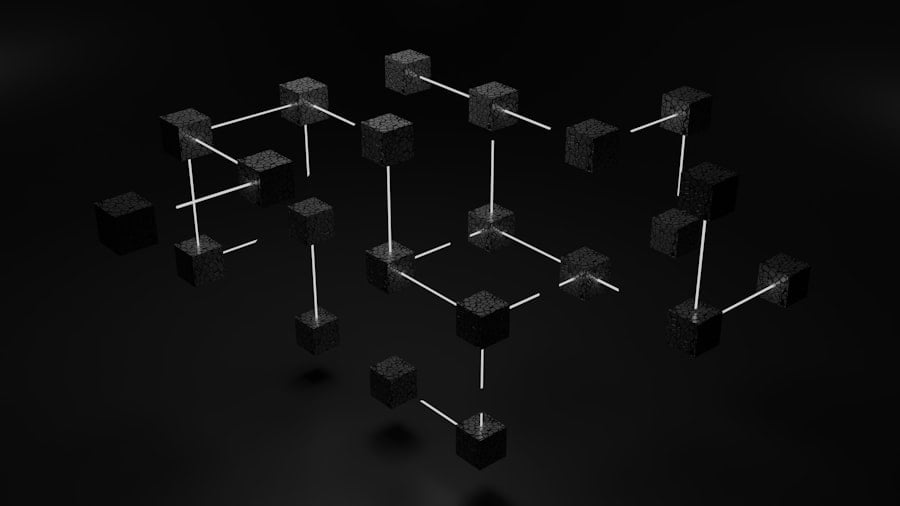Convolutional Neural Networks (CNNs) are a specialized type of deep learning algorithm that has significantly advanced image classification technology. These networks are engineered to automatically learn and adapt to spatial hierarchies of features within input images. This capability enables CNNs to efficiently identify and categorize objects in images, making them invaluable for a wide range of applications, including facial recognition systems, medical image analysis, autonomous vehicle perception, and numerous other fields.
The architecture of CNNs consists of multiple layers that process image data sequentially. The process begins with convolutional layers, which extract various features from the input image. These features are then passed through pooling layers, which reduce the spatial dimensions of the extracted features while retaining important information.
Finally, fully connected layers analyze the condensed feature set to classify the image content. This layered approach allows CNNs to detect intricate patterns and relationships within images, from low-level features like edges and textures to high-level concepts like object shapes and scene compositions. As a result, CNNs have become highly effective in tackling complex image classification tasks, outperforming many traditional computer vision techniques.
Key Takeaways
- CNN is a powerful tool for image classification, using deep learning to analyze and categorize images.
- Artificial intelligence plays a crucial role in CNN, enabling the system to learn and improve its image recognition capabilities over time.
- Advancements in deep learning have led to improved accuracy and efficiency in image classification using CNN.
- CNN has had a significant impact on various industries, including healthcare, automotive, and retail, by enabling better image analysis and recognition.
- Challenges and limitations of CNN in image classification include the need for large datasets, potential biases, and computational complexity.
The Role of Artificial Intelligence in CNN
The Role of AI in CNNs
AI algorithms enable CNNs to learn from large datasets of labeled images, allowing them to continuously improve their ability to accurately classify images. Additionally, AI techniques such as reinforcement learning and transfer learning can be used to further enhance the performance of CNNs for image classification tasks.
Real-World Applications of AI-Enabled CNNs
Furthermore, AI enables CNNs to be deployed in real-world applications such as autonomous vehicles, medical diagnosis, and surveillance systems, where they can accurately and efficiently classify images in real-time.
Advancements in Image Classification
The combination of AI and CNNs has led to significant advancements in image classification, making it possible to automate tasks that were previously only achievable by human experts.
Advancements in Deep Learning for Image Classification

In recent years, there have been significant advancements in deep learning techniques for image classification, particularly in the development of CNN architectures. Researchers have been able to improve the performance of CNNs by designing deeper networks with more layers, as well as incorporating techniques such as residual connections and attention mechanisms to enhance the learning capabilities of CNNs. Moreover, the use of generative adversarial networks (GANs) and transfer learning has allowed for the creation of more robust and accurate CNN models for image classification.
GANs can be used to generate synthetic images that can be used to augment training datasets, while transfer learning enables CNNs to leverage knowledge learned from one task to improve performance on another task. These advancements in deep learning for image classification have led to state-of-the-art performance on benchmark datasets, demonstrating the potential for CNNs to accurately classify images across a wide range of applications.
CNN’s Impact on Various Industries
| Industry | Impact |
|---|---|
| News Media | Increased competition and 24-hour news cycle |
| Politics | Shaping public opinion and influencing policy debates |
| Entertainment | Providing coverage of celebrity news and events |
| Technology | Reporting on tech innovations and industry trends |
| Healthcare | Highlighting medical breakthroughs and public health issues |
The impact of CNNs on various industries has been profound, with applications ranging from healthcare and agriculture to retail and entertainment. In healthcare, CNNs are being used for medical imaging tasks such as diagnosing diseases from X-rays and MRI scans, as well as for drug discovery and personalized medicine. In agriculture, CNNs are being used for crop monitoring and yield prediction, enabling farmers to optimize their production processes.
In retail, CNNs are being used for visual search and recommendation systems, allowing customers to find products similar to those they are interested in. In entertainment, CNNs are being used for content recommendation and personalized advertising, enhancing the user experience on streaming platforms. Overall, the impact of CNNs on various industries has been transformative, enabling businesses to automate tasks, improve decision-making processes, and deliver innovative products and services to consumers.
Challenges and Limitations of CNN in Image Classification
Despite their effectiveness, CNNs also face several challenges and limitations in image classification tasks. One major challenge is the need for large amounts of labeled data for training CNN models. Acquiring and labeling large datasets can be time-consuming and expensive, particularly for niche or specialized domains.
Additionally, CNNs may struggle with classifying images that contain complex or ambiguous visual patterns, leading to misclassifications or errors. Furthermore, CNNs may also be susceptible to adversarial attacks, where small perturbations to input images can cause them to produce incorrect classifications. Another limitation of CNNs is their lack of interpretability, as it can be difficult to understand how they arrive at their classifications.
This lack of transparency can be a barrier in domains where explainability is crucial, such as healthcare and finance.
Future Trends and Developments in CNN for Image Classification

Looking ahead, there are several future trends and developments in CNN for image classification that are poised to further advance the field. One trend is the development of more efficient and lightweight CNN architectures that can be deployed on edge devices with limited computational resources. This will enable CNNs to be used in applications such as IoT devices and mobile phones, expanding their reach and impact.
Another trend is the integration of multimodal learning techniques into CNNs, allowing them to process and classify images along with other types of data such as text and audio. This will enable CNNs to perform more complex tasks such as image captioning and video analysis. Furthermore, advancements in unsupervised learning techniques such as self-supervised learning and contrastive learning are expected to improve the ability of CNNs to learn from unlabeled data, reducing the reliance on large labeled datasets.
Ethical Considerations in CNN Image Classification and AI
As CNNs continue to be deployed in various applications, it is important to consider the ethical implications of their use in image classification and AI more broadly. One ethical consideration is the potential for bias in CNN models, which can lead to unfair or discriminatory outcomes, particularly in applications such as hiring or law enforcement. Another consideration is the privacy implications of using CNNs for image classification, particularly in surveillance systems and facial recognition technologies.
There is a need to establish clear guidelines and regulations around the collection and use of personal data in these applications to protect individuals’ privacy rights. Furthermore, there is a need for transparency and accountability in the development and deployment of CNN models, particularly in high-stakes applications such as healthcare and criminal justice. It is important to ensure that CNN models are explainable and that their decisions can be audited and understood by human experts.
In conclusion, CNNs have had a profound impact on image classification across various industries, driven by advancements in deep learning techniques and AI. While there are challenges and limitations to be addressed, the future holds promising trends and developments that will further enhance the capabilities of CNNs for image classification. It is crucial to consider the ethical implications of using CNNs in AI applications and ensure that they are deployed responsibly and ethically.
For those interested in the intersection of artificial intelligence and image classification, a related article that delves into the broader applications of AI can be found on Metaversum. The article titled “Artificial Intelligence (AI)” explores various facets of AI technology, including its impact on industries and its potential future developments. This can provide a foundational understanding that is beneficial when exploring specific AI applications like CNN for image classification. You can read more about it by visiting Artificial Intelligence (AI) on Metaversum.
FAQs
What is CNN for image classification?
CNN, or Convolutional Neural Network, is a type of deep learning algorithm that is commonly used for image classification tasks. It is designed to automatically and adaptively learn spatial hierarchies of features from input images.
How does CNN work for image classification?
CNN works by using a series of convolutional, pooling, and fully connected layers to extract features from input images and then classify them into different categories. The convolutional layers apply filters to the input image to detect features, while the pooling layers downsample the feature maps to reduce the computational complexity. The fully connected layers then use the extracted features to make predictions.
What are the advantages of using CNN for image classification?
CNN has several advantages for image classification, including its ability to automatically learn features from raw data, its robustness to variations in input images, and its scalability to large datasets. It also has the ability to capture spatial hierarchies of features, making it well-suited for tasks such as object recognition and scene understanding.
What are some common applications of CNN for image classification?
CNN is commonly used in a wide range of applications, including facial recognition, object detection, medical image analysis, autonomous vehicles, and satellite image analysis. It has also been used in various industries such as healthcare, automotive, and agriculture for tasks such as disease diagnosis, traffic sign recognition, and crop monitoring.
What are some challenges of using CNN for image classification?
Some challenges of using CNN for image classification include the need for large amounts of labeled training data, the potential for overfitting to the training data, and the computational complexity of training and deploying large CNN models. Additionally, CNN may struggle with recognizing objects in images that are occluded, rotated, or have varying lighting conditions.

Leave a Reply